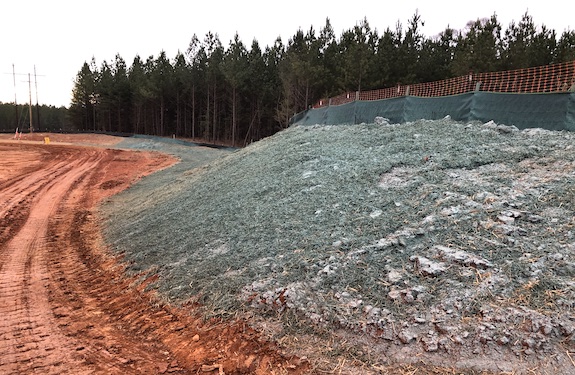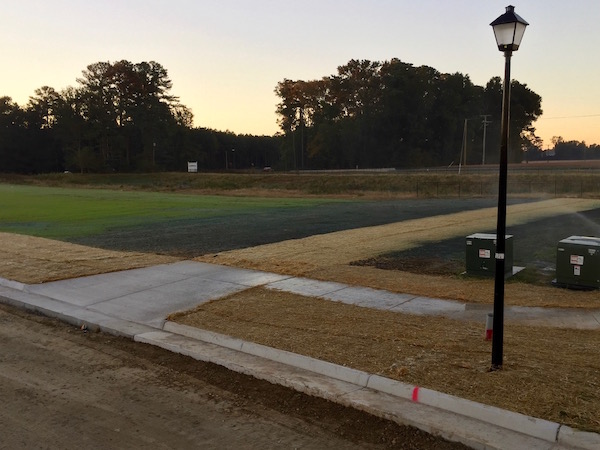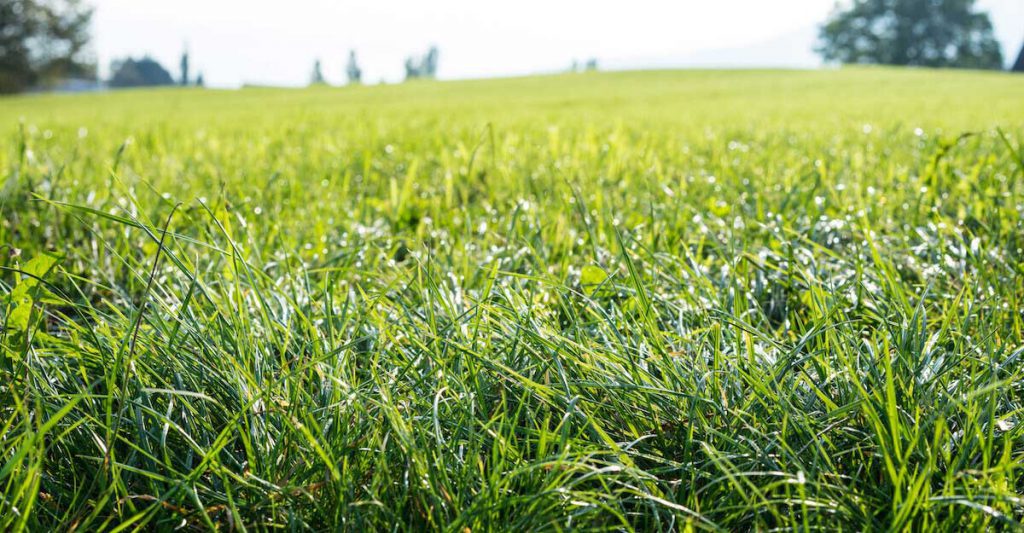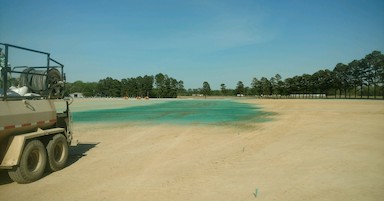2 AprSpring Seeding in the Mid-Atlantic: How to get results in the Transition Zone
Spring Seeding | 2022 Update
Everywhere you look Spring seeding has begun. Landscapers are overseeding lawns and contractors are seeding construction sites.
While the methods and outcomes may vary, the goal is the same: grow thick green grass quickly.
There is no magic solution to successfully grow grass in the Mid-Atlantic region but there are a few things you can learn to set yourself up for success.
- Understand the Mid-Atlantic’s seasonal challenges
- Learn what seed varieties perform best in the Spring
- Use the right seeding method and mix for your project
Spring Seeding Challenges in the Transition Zone
Our offices are in Virginia but we serve customers all over the Mid-Atlantic. Our thirty years of experience in the Transition Zone means we understand the field challenges your team faces every season.
The Transition Zone is the region between the cool North and the warm South. These growing regions stretch from coast to coast but we’re going to focus on growing conditions in the Mid-Atlantic Transition Zone. Some of these states include Virginia, North Carolina, Maryland and Delaware.

In the Mid-Atlantic, we have four distinct seasons that each have their own unique (and often unpredictable) weather patterns. This Spring, for example, we’ve already seen temperatures spike into the 80s and dip down into the 30s at night. The Transition Zone Spring also historically brings heavy rain.
Rather than curse these unpredictable Spring days, we understand this is the nature of our environment and we embrace it!
That is the first key to successful Spring time seeding in the Mid-Atlantic.
Which seed varieties are best for Spring seeding in the Transition Zone?
To grow the best grass this Spring, we recommend using Tall Fescue and incorporating a nurse crop like Annual Ryegrass.
Annual Ryegrass is a good nurse crop for the Spring because it germinates quickly, giving Tall Fescue more time to grow since it germinates more slowly. Because Annual Ryegrass is an annual crop, it will die off while the Fescue continues to grow. Annual crops like Annual Ryegrass only grow for one season.
Tall Fescue, on the other hand, is a perennial. Perennial crops germinate, grow, go dormant and then germinate again the following year.
When you seed your construction site with this Spring combination of annuals and perennials, you should see quick growth (from the Annual Ryegrass) and sustained vegetation through the Fall (from the Tall Fescue).
Tip: Ideally, you should spread the Tall Fescue before the temperature exceeds 85°F so that the Fescue has time to germinate and grow strong roots.

Rye and Fescue Varieties for Spring 2022
We supply several grass seed varieties that are rotated based on the growing season. This Spring we are supplying the following Rye and Fescue varieties:
- Annual Ryegrass
- DOT Certified Annual Rye
- K-31 Fescue
- DOT Certified Tall Fescue
- DOT Certified Fine Fescue
- Spring Contractor’s Blend
- Colonial Heritage Fescue
Each variety is available as a fifty-pound bag.
We supply more than just Rye and Fescue! Our warehouses also maintain an inventory of Millet, Bermuda and specialty blends. If you don’t see the grass seed you need, just ask!
Contractor’s Blend Seed – What makes ours different?
Many contractor-specific seed blends are an 80/20 Blend: 80% Fescue and 20% Rye.
We, however, hand-pick a custom blend each season. After years of field experience and talking to contractors about what works and what doesn’t work, we decided to break the 80/20 mold and create a more temperature appropriate blend.
Although some seasons we will supply an 80/20 blend, our ratios and varieties vary with the changing Mid-Atlantic weather.
The result is grass that germinates faster, fuller and greener.
Spring 2022 Contractor’s Blend
This Spring, our Contractor’s Blend is a classic 60/40 Blend of Fescue and Rye: 60% Rebel V Tall Fescue and 40% Annual Ryegrass.
Seeding Methods
Like we mentioned at the beginning, contractors and landscapers are seeding their sites differently in order to achieve different results.
Overseeding Residential or Commercial Lawns
Although Annual Ryegrass and Tall Fescue are the optimal varieties for Spring seeding construction sites in the Mid-Atlantic, landscapers shouldn’t use a nurse crop when overseeding lawns.

Overseeding means spreading seed into grass that is already grown. The best time to overseed varies region to region. In the Transition Zone, the Fall is actually the best time to overseed. The Spring is the second-best season for overseeding in the Mid-Atlantic.
Many choose to overseed in the Spring, however, because when the weather improves they want to see a healthy green lawn.
When landscapers overseed they should choose a perennial variety, like our Colonial Heritage Mix. That is because you want the grass to grow full and green year after year. Landscapers should only use the annual-perennial combination when they are seeding construction sites from the bare ground. The Colonial Heritage Mix is an all-Fescue four way blend includes some of Pennington’s top performing Fescues like Rebel V and Rebel Advance. This custom-to-Colonial mix also includes Fawn Tall Fescue and K-31.
Contractors, on the other hand, are either temporary seeding or permanent seeding construction sites.
Temporary Seeding Construction Sites
Temporary seeding intends to establish vegetative cover quickly, ideally within 1 to 14 days. Many states have requirements to stabilize construction sites after a certain amount of days of inactivity. In Virginia, for example, that time limit is 14 days. Because seeding is a cost-effective and reliable form of erosion control, many contractors will temporary seed their sites by either hydroseeding or hand spreading seed.

When temporary seeding this Spring, we suggest contractors use Annual Ryegrass or our Spring Contractor’s Blend. Because you don’t need to establish long-term vegetation, it is not imperative to incorporate a perennial into your temporary seeding.
However, our Contractor’s Mix will grow fast and green. If your site remains inactive for some time, you won’t have to worry about an inspector handing you a fine for lack of vegetation or erosion control measures.
Permanent Seeding Construction Sites
The goal for permanent seeding construction sites is to establish long-term permanent vegetation. In addition to growing grass on new developments, permanent seeding can also be an effective method of erosion control.

We suggest contractors use a mix of annual and perennials when permanent seeding sites. Contractors can benefit from using our Spring Contractor’s Blend Seed because it is already blended to meet the season’s demands. Spreading Contractor’s Blend is also more cost-effective than spreading the pure varieties of Fescue and Ryegrass separately.
Choosing the variety really come down to preference and your site’s specific conditions. We’ll always provide you with a range of seed varieties so that you can make the best decision for your project’s goals.
Know your environment for best results
There’s no hard and fast rule on seeding, no matter what the season or climate. What works for landscapers on a residential lawn won’t for work contractors on the side of a highway.
However, by adapting your seed to the season’s demands and your site’s conditions, you’re more likely to get the desired results.
With thirty years of on-site experience in the Mid-Atlantic, our team knows what works and what doesn’t work for seeding.
Contact us for pricing when you’re ready to start seeding your next site.
Read More About Grass Seed
EarthGuard Hydraulic Mulch
Why Should You Hydroseed with EarthGuard® Hydraulic Mulch? Hydraulic mulch stabilizes soil to control erosion….
Hydroseeding 101
Fall Seeding in the Mid-Atlantic
Construction sites need to be seeded throughout the entire year. Some seasons, however, are better…





